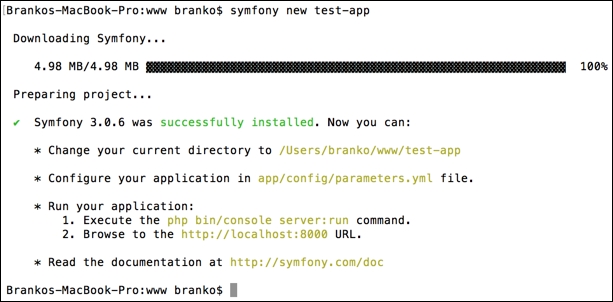Now that we have a Symfony installer all setup, let's go ahead and create a new blank project. We do so by simply executing a symfony new test-app command, as shown in the following command line instance:

Here we are creating a new project, called test-app. We can see that the Symfony installer is downloading the latest Symfony framework from the internet, alongside outputting a brief instruction on how to run the built in PHP server via Symfony console application. The whole process might take up to a few minutes.
The structure of newly created test-app directory occurs similar to the following one:

There are numerous files and directories created here for us. Our interest, however, is focused on app and src directories. The app directory is where the site wide application configuration resides. Here we can find configuration for database, routing, security, and other services. Also, this is where default layout and template file reside, as shown in the following screenshot...



